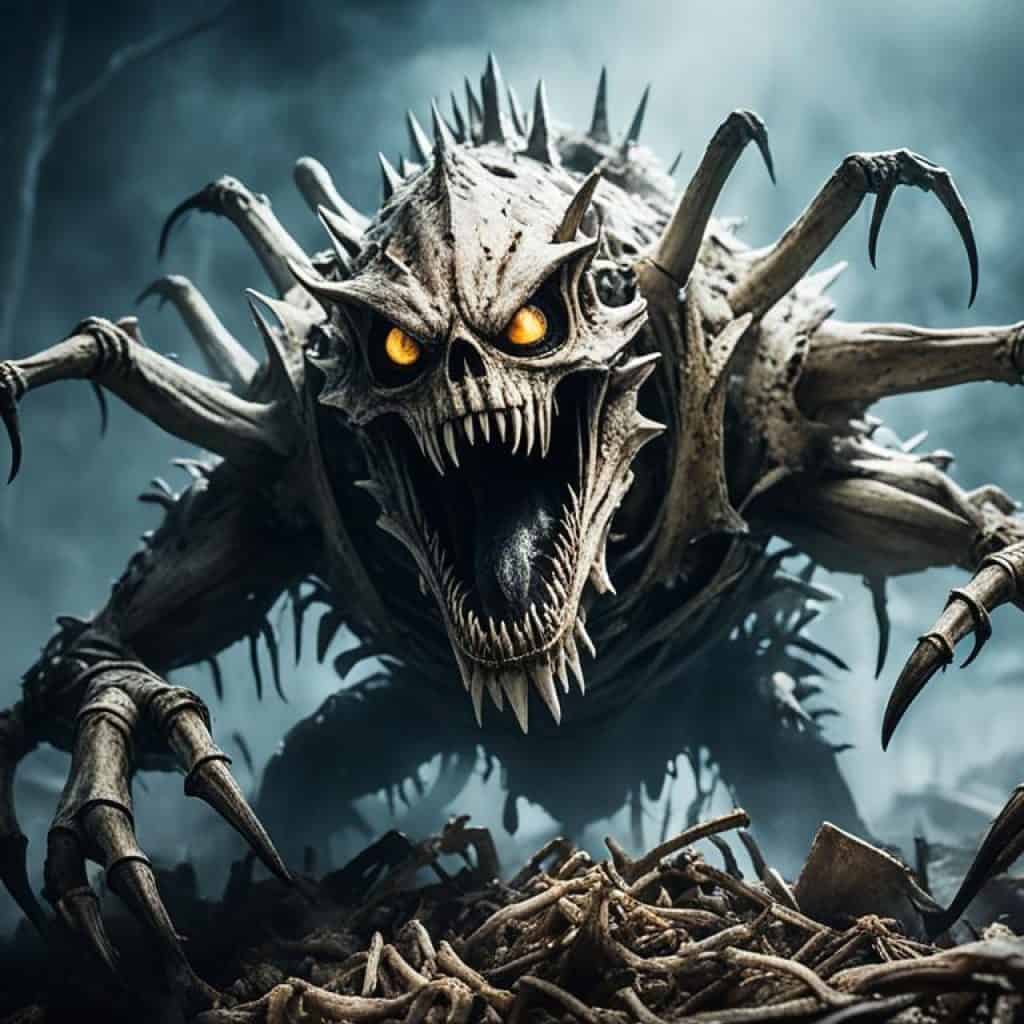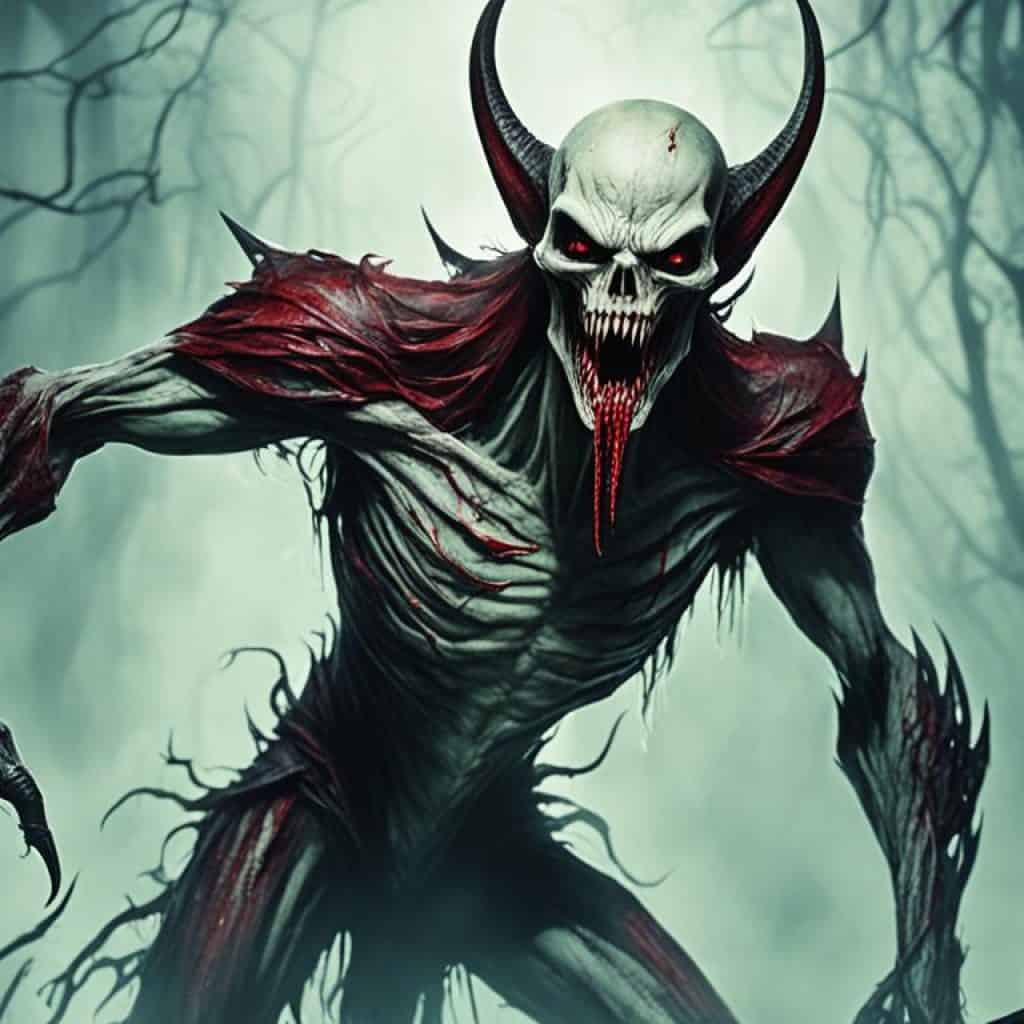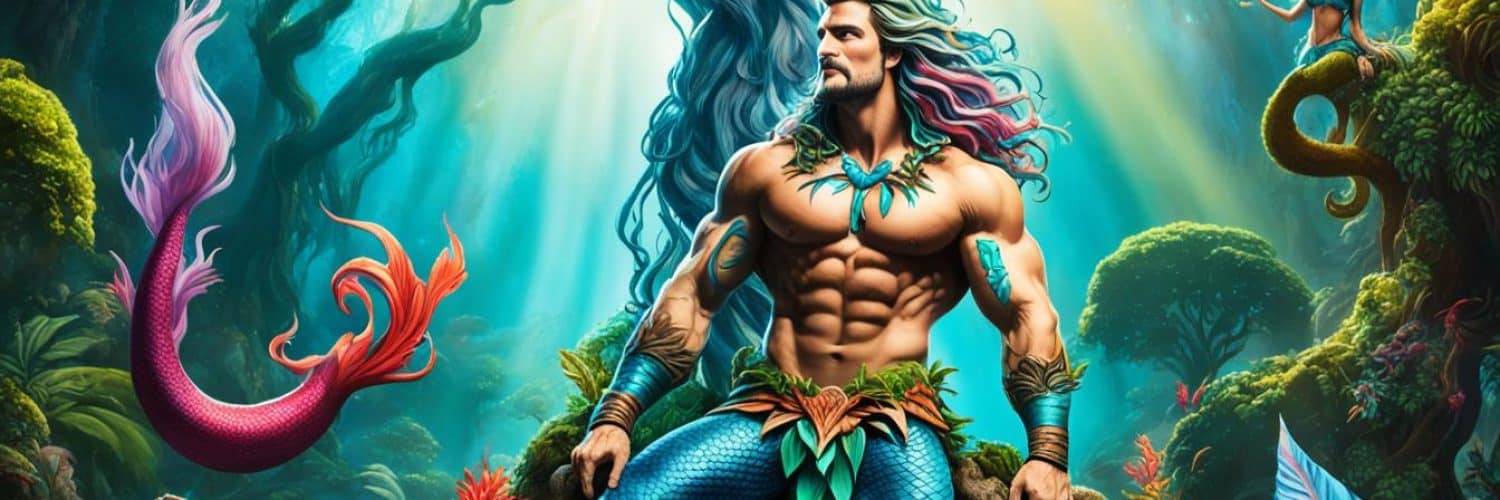Discover the enchanting world of Philippine myths and legends, as we delve into the rich tapestry of Filipino folklore. From vicious soul-sucking creatures to haunting ghostly apparitions, these captivating tales have been passed down through generations, shaping the culture and beliefs of the Filipino people. Join us on a journey of exploration as we debunk myths, challenge common beliefs, and unravel the mysteries of the Philippines’ mythical creatures.
Key Takeaways:
- Explore the diverse range of mythical creatures in Philippine folklore
- Uncover the terrifying stories behind popular creatures like the Aswang and the Amomongo
- Learn about lesser-known creatures such as the Kibaan and the Bal Bal
- Discover the cultural significance and symbolism of these myths
- Reflect on how these myths shape the beliefs and traditions of the Filipino people
The Aswang – The Vicious Soul-Sucking Creature
The Aswang is perhaps the most well-known creature in Filipino mythology. It is a shape-shifting monster that is said to roam the streets at night in search of its next victim. It is believed to have the ability to transform into different animals or people, making it difficult to detect. The Aswang is notorious for preying on pregnant women and newborn babies, sucking out their organs while they sleep. This creature has become a staple in Filipino folklore and continues to be a subject of fear and fascination.
Shape-Shifting and Elusive
The Aswang’s shape-shifting abilities make it a formidable and elusive creature. It can take on various forms, such as a dog, cat, or even a family member, allowing it to blend seamlessly into its surroundings. This ability to deceive and hide in plain sight adds to the terror of encountering an Aswang.
“The Aswang is like a nightmare come to life. It can appear as someone you know and trust, which makes it even more dangerous. It keeps you on edge, not knowing who or what to trust.”
Preying on the Vulnerable
One of the most horrifying aspects of the Aswang’s legend is its preference for attacking pregnant women and newborn babies. It is said to be particularly drawn to the smell of blood and the vulnerable state of expectant mothers and their infants. Believed to use its long, proboscis-like tongue, the Aswang sucks out their organs while they sleep, leaving behind an empty shell.
- Shape-shifting abilities
- Predominantly targets pregnant women and newborn babies
- Feeds on their organs while they sleep
A Deeply Ingrained Fear
The Aswang’s reign of terror has left a lasting impact on the Filipino psyche. Even to this day, stories and warnings about the Aswang continue to be shared, passed down from one generation to another. The fear of encountering this vicious soul-sucking creature has become deeply ingrained in the Filipino culture, serving as a constant reminder of the dangers that lurk in the darkness.
Next, let’s explore another fascinating creature from Filipino folklore, the Kibaan.
Kibaan – The Bird-Like Beast with a Broken Heart
In the northern part of the Philippines, particularly in Ilocos, resides a fascinating creature known as the Kibaan. This bird-like beast has captured the imaginations of locals and has become a prominent figure in the region’s mythology.
According to local legends, the Kibaan is a creature that experiences the depths of heartbreak. It falls in love with girls from the town but, unfortunately, always ends up with a broken heart. In response to its pain, the Kibaan seeks revenge by using its magical powder to afflict victims with a harmful skin condition.
However, despite its vengeful nature, the Kibaan also possesses a benevolent side. It can be appeased and forgiven, showing that there is more to this creature than meets the eye.
“Legends say that the Kibaan’s heartache fuels its actions, causing it to inflict suffering. Yet, forgiveness and understanding can unlock its gentle essence, highlighting the complexity of this mythological creature.”
Pasatsat – The Ghosts of the War Era
In the province of Pangasinan during the Japanese occupation, a chilling legend emerged – the Pasatsat. According to local folklore, these haunting figures are the souls of people who were buried without proper coffins during that tumultuous time. These ghastly ghosts are said to appear to unsuspecting individuals, emitting a foul odor that adds to the eerie atmosphere.
The encounter with a Pasatsat can be a terrifying experience, but local lore provides a way to free the tortured souls. Those who cross paths with a Pasatsat are required to stab them until they disintegrate, liberating the trapped spirits from their eternal torment.
| Pasatsat | Pangasinan | Japanese Occupation |
|---|---|---|
| Ghosts of people buried without coffins | Originated in Pangasinan | During the Japanese occupation |
| Appear as ghastly figures emitting foul odor | Encounter requires stabbing for liberation | Freeing the tortured souls |
Berberoka – The Freshwater Ogre
Discover the fascinating legend of Berberoka, a freshwater ogre that lurks in the enchanting waters of the Northern Philippines. Known for its deceptive nature and cunning tactics, Berberoka is a creature that fishermen must beware of.
Residing in areas like Abra, Apayao, and Ilocos Norte, Berberoka possesses an uncanny ability to lure unsuspecting fishermen to their demise. It cunningly sucks water from swamps or lakes, leaving behind a school of fish on the water’s surface, creating an irresistible bait.
“Beware of the Berberoka’s trap, for its deceiving actions lead to a deadly fate. The shimmering school of fish may seem like a bountiful catch, but it conceals the lurking danger that awaits.”
As fishermen eagerly gather to catch the abundant fish, the Berberoka seizes the opportunity to strike. It drowns its victims and devours their bodies, satisfying its insatiable hunger.
To ward off a Berberoka and protect oneself from its treacherous clutches, locals believe that carrying crabs can deter the creature. It is said that Berberokas fear crabs and will refrain from attacking those who carry these crustaceans.
Don’t be deceived by the calm waters of the Northern Philippines. The Berberoka awaits its next prey, ready to unleash its deadly ploy. Stay alert, and be cautious when venturing into the mystical realm of this freshwater ogre.

Amomongo – The Hairy White Ape
In the vast caves of Mt. Kanlaon in Negros Occidental, a mysterious creature known as the Amomongo, or “Negros ape,” is said to dwell. This elusive being is described as a hairy white ape, adorned with long, sharp nails that resemble claws.
The Amomongo is known for its carnivorous nature, as it sustains itself by disemboweling its prey and feasting on their intestines. Its terrifying presence and gruesome feeding habits have earned it a fearsome reputation among the inhabitants of Negros Occidental.
Similar to the Western Bigfoot, the Amomongo is a creature that combines both fascination and terror, capturing the imaginations of those who dare to delve into the depths of Philippine folklore.
Notable Features of the Amomongo:
- Dwells in the caves of Mt. Kanlaon in Negros Occidental
- Appears as a hairy white ape with long, sharp nails
- Feeds on the intestines of its prey
- Shares similarities with the Western Bigfoot
“The Amomongo is an intriguing creature that continues to captivate the minds and fuel the fears of those who venture into the realm of Philippine mythology. Its presence in the caves of Mt. Kanlaon adds an air of mystery and allure to the already rich folklore of Negros Occidental.” – Local folklore enthusiast
Bungisngis – The Filipino Cyclops
The Bungisngis is a fascinating creature from Filipino folklore, known as the Filipino Cyclops. This one-eyed monster finds its home in the enchanting town of Orion, Bataan. What sets the Bungisngis apart from its Western counterpart is its unique laugh, which echoes through the mountains and forests where it resides.
Despite its fearsome appearance, the Bungisngis is considered to be less threatening than one might expect. With its enormous upper lip, massive teeth, and long tusks, it may appear intimidating at first glance. However, the monster’s persona becomes more horrifying the cheerier and kinder it presents itself.
The legend of the Bungisngis continues to intrigue and captivate both locals and visitors as they delve into the rich tapestry of Philippine folklore.
Bal Bal – The Scavenger-Monster
In the region of Catanauan, Quezon, lurks a terrifying creature known as Bal Bal. This scavenger-monster has a morbid fascination with dead human bodies, and it is believed that it snatches corpses from graves, cemeteries, and even funerals. Armed with its long, razor-sharp claws, the Bal Bal effortlessly captures its hapless victims.
“The pungent scent of the Bal Bal has the power to lull the living into a deep slumber while it feasts on the flesh of the deceased. The unsuspecting humans are enveloped in a state of unconsciousness, completely unaware of the gruesome act taking place.”
Interestingly, the Bal Bal doesn’t stop at merely devouring the corpses. It replaces the eaten flesh with the trunk of a banana, leaving a disturbing and perplexing sight for those who subsequently discover the desecrated graves. This macabre act has baffled and terrified the inhabitants of Catanauan for generations.

The Sinister Dance of Shadows
The night is when the Bal Bal roams freely, a black silhouette dancing in the moonlight. In the dense forests of Catanauan, its presence is felt, chilling the very air with its eerie aura. The faint rustling of leaves, combined with the piercing cries of nocturnal creatures, sets the stage for this heart-stopping rendezvous with darkness.
The Bal Bal’s grotesque appearance and unsettling actions inspire both fear and fascination among those brave enough to delve into the depths of its lore. Its name is uttered in hushed tones, a cautionary tale whispered through generations, reminding the living to respect the dead and fear the unknown.
Bal Bal – Key Characteristics
| Characteristics | Description |
|---|---|
| Origin | Catanauan, Quezon |
| Preference | Dead human bodies |
| Method | Snatches corpses from graves, cemeteries, and funerals |
| Tool | Long razor-sharp claws |
| Feeding Habits | Emits a pungent scent that induces sleep in the living while it feasts on the dead bodies |
| Desecration | Replaces the eaten flesh with a banana trunk |
The chilling tale of the Bal Bal reminds us of the thin line separating life and death. It embodies the delicate balance between the seen and unseen, and the eerie power that folklore holds in shaping culture. Whether it is a cautionary tale or simply a figment of imagination, the Bal Bal continues to captivate and terrify those who dare to explore the depths of its mysterious existence.
Matruculan – The Monster that Preys on Pregnant Women
The Matruculan is a terrifying creature that preys on pregnant women in Filipino folklore. According to myths, it impregnates women and waits until they go into labor to claim its meal. To ward off the Matruculan, it is believed that the husband must place a knife or sharp object above the belly of the mother while she is in labor. This act is believed to protect the woman and the unborn child from harm.
Mangangatok – The Messenger of Death
Mangangatoks are creatures associated with impending death in Filipino folklore. As messengers of death, they appear as three hooded figures when someone’s demise is near. They strike fear into the hearts of those who encounter them, for their presence is a sign that the Grim Reaper is near.
According to Death folklore, Mangangatoks cannot be ignored or avoided. Once they knock on your door, it is believed that a member of your family will die shortly after. Their ominous presence reminds us of the fragility of life and the inevitability of death.
“The arrival of the Mangangatok serves as a haunting reminder that mortality is an inevitable part of the human experience.”
In Filipino culture, there is a deep respect for the cycle of life and death. The Mangangatok symbolizes the end of one’s journey and the beginning of another. It encourages us to cherish our loved ones and live each day to the fullest, for we never truly know when the Grim Reaper will come knocking on our door.
Anduduno – The Creature that Preys on the Helpless
The Anduduno is a terrifying creature that specifically targets the most vulnerable individuals – the sick, bedridden, and paralyzed. This malevolent creature is known for its snake-like tongues and dwells in the darkest corners of a house, often found in the bottom-most part. The Andudunos are cunning and elusive, silently sneaking in through windows to prey upon their helpless victims.
Once the Anduduno has made its way into the home, it swiftly employs its slimy and poisonous tongues to accelerate the demise of those unfortunate enough to be bedridden. With every touch of its repugnant tongue, the creature hastens their death, making it a fearsome and gruesome predator.
Legend has it that the Anduduno doesn’t stop at targeting the living. It is said to possess a morbid appetite for corpses and has been known to unearth buried bodies, consuming them with an insatiable hunger.
“The Anduduno represents a horrifying manifestation of helplessness and vulnerability. Its presence instills a deep sense of terror and serves as a reminder of the fragility of life.” – Filipino Folklore Enthusiast
This creature from Filipino folklore is a chilling reminder of the dangers lurking in the shadows. Its depiction serves as a cautionary tale, urging individuals to protect themselves against the hidden threats that exist within their surroundings.
Stay vigilant, for the Anduduno could be waiting just beyond your window.
Amalanhig – The Bite of Laughter
In Visayan mythology, the Amalanhig is a vampire-like creature that possesses similarities to the infamous Aswang. However, instead of quenching its thirst with blood, the Amalanhig has a unique and terrifying method of claiming its victims. It chases its prey and sinks its teeth into their necks, but instead of drinking blood, it tickles them relentlessly until they succumb to their demise. This unusual method of causing death leaves its victims in a state of laughter and terror, amplifying the horror of the encounter.
Legend has it that the Amalanhig can be found lurking in the shadows, ready to pounce on unsuspecting individuals. To escape its clutches, one must resort to clever tactics. The creature is feared by heights and water. Therefore, running in a zigzag pattern or seeking refuge in highly elevated areas or bodies of water can offer temporary reprieve from the Amalanhig’s pursuit.
This vampire-like creature demonstrates the imaginative and frightful nature of Visayan mythology. Its distinct method of causing death through tickling rather than bloodshed reflects the unique beliefs and folklore of the region.
“The Amalanhig is a formidable creature that showcases the diversity of Philippine mythology. Its relentless pursuit and chilling laughter make it a truly menacing presence.”

Amalanhig at a Glance
| Key characteristics | Methods of attack | Ways to repel |
|---|---|---|
| Tickles victims to death | Bites victims’ necks | Run in a zigzag pattern |
| Seek refuge in elevated areas or bodies of water |
Encountering an Amalanhig is a chilling experience. However, armed with knowledge of its weaknesses and the strategies to evade it, one may have a fighting chance against this vampire-like creature.
The White Lady of Balete Drive
The White Lady of Balete Drive is an infamous ghost in Filipino folklore known for haunting the streets of Quezon City. This chilling specter is often encountered by unsuspecting cab drivers as they navigate the dark and winding road. Legend has it that the White Lady appears as a beautiful woman in a flowing white dress, luring drivers into her ethereal presence.
As the cab drivers catch a glimpse of her in their rearview mirror, a bone-chilling sight awaits them. The once beautiful woman transforms into a ghastly figure with a bruised and bloodied face, sending shivers down their spines. Many drivers have reported feeling an eerie presence and experiencing unexplained phenomena while passing through Balete Drive.
The White Lady of Balete Drive is a popular topic of ghost stories and urban legends, deeply ingrained in the collective consciousness of the Filipino people. Her haunting presence continues to captivate the imagination of both locals and tourists, making Balete Drive a destination for thrill-seekers and ghost enthusiasts.
“Encountering the White Lady of Balete Drive is a spine-chilling experience that leaves a lasting impression on those who dare to venture into her realm.”
– Local folklore
Ghostly Encounters
Over the years, numerous encounters with the White Lady have been reported. Drivers have shared spine-tingling stories of seeing her ghostly figure in their rearview mirror, sometimes even reaching out to touch them or causing their vehicles to malfunction. These encounters often leave a lasting psychological impact on individuals who have come face-to-face with this paranormal entity.
Urban Legends and Supernatural Explanations
Urban legends surrounding the White Lady of Balete Drive abound, with various theories attempting to explain her haunting presence. Some believe she is the ghost of a woman who died tragically on Balete Drive, seeking redemption or revenge. Others speculate that she is a residual energy imprinted on the location, forever reliving her final moments.
While skeptics may dismiss these tales as mere folklore, the strong belief in the White Lady’s existence persists among those who have experienced her presence firsthand.
| Encounter | Location | Date |
|---|---|---|
| A taxi driver recounts seeing the White Lady in his rearview mirror, causing him to lose control of his vehicle. | Balete Drive | April 3, 1998 |
| A group of friends claims to have captured an eerie apparition resembling the White Lady in a photograph while driving along Balete Drive. | Balete Drive | September 21, 2012 |
| An urban explorer tells a harrowing tale of encountering the White Lady during a late-night visit to Balete Drive, experiencing a sudden drop in temperature and hearing disembodied whispers. | Balete Drive | October 31, 2019 |
These accounts of ghostly encounters add to the mystique and intrigue surrounding the White Lady of Balete Drive, further solidifying her status as one of the Philippines’ most chilling supernatural entities.
Philippine Water Creatures – Berberoka and Tikbalang
Philippine mythology is a treasure trove of captivating water creatures that have intrigued generations with their unique tales. Two prominent examples are the Berberoka and Tikbalang, each with its own distinct characteristics and role in Filipino folklore.
Berberoka: The Freshwater Ogre
The Berberoka is a fearsome creature that dwells in freshwater areas, particularly in regions like Abra, Apayao, and Ilocos Norte. As a freshwater ogre, it poses a threat to unsuspecting fishermen who fall victim to its deceptive tactics.
In its cunning nature, the Berberoka utilizes its ability to draw water from swamps or lakes, leaving behind a school of fish on the water’s surface. This lures fishermen into an ambush, as they are enticed by the seemingly abundant catch. However, once the fishermen gather to seize the fish, the Berberoka reveals its true intentions. It unleashes its power, drowning the fishermen and feasting upon their bodies.
Ancient lore suggests that carrying crabs can ward off the Berberoka, as the creature fears these crustaceans. This belief has been passed down through generations and serves as a cautionary tale for those venturing into the water.
Tikbalang: The Mischief-Maker
The Tikbalang is a creature that holds a prominent position in Philippine mythology as a half-man, half-horse being. Known for its mischievous demeanor, the Tikbalang often causes trouble and confusion for those who encounter it.
Residing in forests, mountains, and other Philippine landscapes, the Tikbalang enjoys playing tricks on unsuspecting travelers. It is known for mimicking the sound of footsteps, leading wanderers astray and causing them to become disoriented in the wilderness. In some instances, it may even change its form or hide its true appearance to further confuse its victims.
The Tikbalang is believed to possess supernatural powers, enabling it to manipulate time, create illusions, and influence the weather. Despite its mischievous behavior, it is not inherently malevolent and can sometimes help those who show respect and offer proper manners.
These water creatures, the Berberoka and Tikbalang, epitomize the diverse range of beings found in Philippine mythology. Their stories continue to captivate the imagination, carrying the rich cultural heritage of the country through the generations.
Philippine Mythological Items – Mutya ng Saging and Kaptan’s Golden Shell
In Philippine mythology, there are extraordinary items that hold immense power and significance. These mythical artifacts play a significant role in stories and legends, captivating the imagination of those who hear their tales. Two prominent examples of such intriguing items are the Mutya ng Saging and Kaptan’s Golden Shell.
Mutya ng Saging: Jewel of Supernatural Abilities
The Mutya ng Saging is a mystical jewel that is said to possess extraordinary powers. This precious gem is associated with the banana plant (saging in Filipino) and is believed to be hidden inside a ripe banana. According to folklore, whoever consumes the Mutya ng Saging gains supernatural abilities, such as enhanced strength, agility, and even clairvoyance.
Legends tell of heroes who have sought out this jewel, consuming it to harness its remarkable powers. The Mutya ng Saging embodies the essence of nature’s magic, granting its possessor incredible abilities that can be used for both good and evil.
Kaptan’s Golden Shell: The Enigmatic Transformer
The Golden Shell of Kaptan is a legendary artifact that possesses the power of transformation. Kaptan, also known as Bathala or Ampu, is a revered deity in Philippine mythology. It is said that this divine shell can shape-shift into different forms, granting its wielder the ability to assume any desired appearance.
Stories depict the Golden Shell as a prized possession that many seek to obtain. It is believed to hold immense power and is highly coveted by individuals who wish to deceive or make significant changes in their lives. The Golden Shell represents the duality of transformation and the responsibility that comes with wielding such power.
A Glimpse into Filipino Folklore
These mythical items, the Mutya ng Saging and Kaptan’s Golden Shell, offer a glimpse into the rich and vibrant tapestry of Filipino folklore. They add depth and intrigue to the narratives, symbolizing the extraordinary and the extraordinary that lies within the ordinary. These artifacts serve as reminders of the power of belief, the wonders of the natural world, and the limitless possibilities that exist in the realm of myth and legend.
| | Mutya ng Saging | Kaptan’s Golden Shell |
|:—————–:|:———————————-:|:———————————:|
| Significance | Possesses supernatural abilities | Has the power of transformation |
| Associated Entity | Banana plant | Deity (Kaptan, Bathala, or Ampu) |
| Powers Bestowed | Enhanced strength, agility, clairvoyance | Ability to transform appearance |
| Desired by | Individuals seeking extraordinary abilities | Those who wish to change their appearance or deceive others |
| Symbolism | Nature’s magic, potential for good or evil | Dual nature of transformation and its consequences |
Conclusion
Philippine myths and folklore are an integral part of the country’s rich cultural heritage. These captivating tales, filled with terrifying creatures like the Aswang and Tikbalang, as well as intriguing items like the Mutya ng Saging and Kaptan’s Golden Shell, have been passed down through generations, preserving the beliefs, traditions, and imagination of the Filipino people.
Exploring and understanding these myths offers a unique glimpse into the country’s vibrant history and diverse cultural landscape. The legends not only entertain but also educate, shedding light on the values and customs that have shaped Filipino society for centuries.
As these stories continue to be shared and celebrated, Philippine myths and folklore remain an important aspect of the country’s identity, fostering a connection between past and present, and inspiring curiosity and wonder in both locals and visitors. Delving into the world of Philippine myths opens up a treasure trove of captivating narratives, providing a deeper appreciation for the rich cultural tapestry of the Philippines.


















Add comment